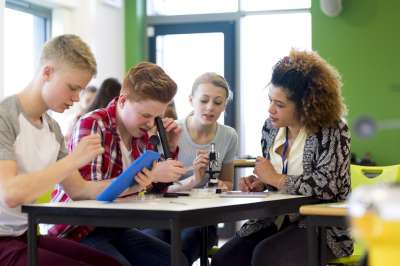Comparison
What Is It?
Comparison involves looking at two or more things or ideas and considering their similarities and differences. In many classrooms, teachers use Venn diagrams to help students organize their thoughts when making simple comparisons. The similar characteristics of the two things or ideas is written in the overlapping area of the diagram. The unique characteristics are written in the outer areas of the diagram.
A comparison chart is in some ways a more useful graphic organizer than a Venn diagram, enabling students to label and compare similar features. Comparison charts allow students to analyze similarities and differences by focusing on specific attributes, helping them to organize their thinking. For example, a student might incorrectly compare a coyote and wolf by saying, "A coyote can live in Canada, and wolves hunt in packs." Using a comparison chart will help students to compare using features or attributes that are similar. A sample comparison chart, comparing wolves and coyotes, is pictured below.
| Feature | Coyote | Wolf |
| Size | 18 inches tall, maximum height | 30 inches tall, on average |
| Prey | Small animals | Coyote, deer, beaver |
| Animal Classification | Cadidae, Canis latrans | Candidae, Canis lupus |
Why Is It Important?
Comparing is a basic skill in thinking about and understanding topics and concepts.
Comparison is a foundation skill that leads to higher-level skills such as classification, concept definition, metaphor, and analogy.
Comparison is one method of identifying similarities and differences. In their book, Classroom Instruction that Works, Marzano, Pickering, and Pollock draw four generalizations from the research in this area:
Presenting students with explicit guidance in identifying similarities and differences enhances students' understanding of and ability to use knowledge.
Asking students to identify similarities and differences independently enhances their understanding of and ability to use knowledge.
Representing similarities and differences in graphic or symbolic form enhances students' understanding of and ability to use knowledge.
Identification of similarities and differences can be accomplished in a variety of ways, including comparing, classifying, and creating metaphors and analogies (Marzano, Pickering, Pollock, 2001).















